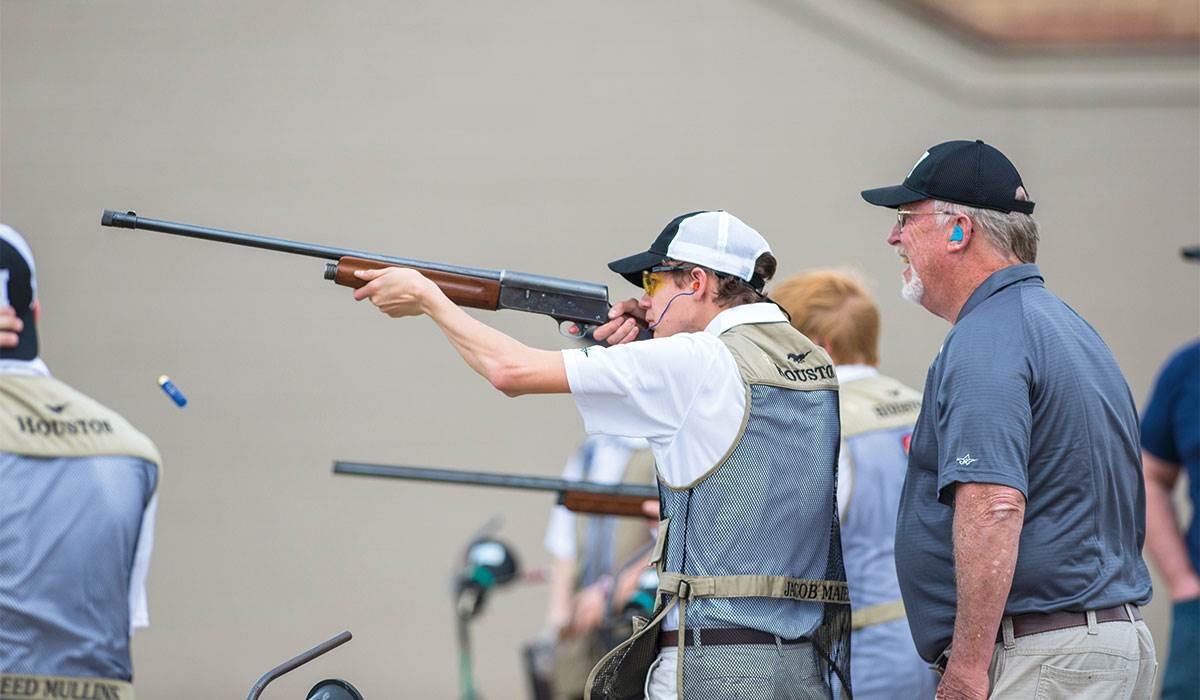Off to a Good Start
Get off to a good start in waterfowl hunting with expert shooting tips. Improve your skills and increase success in the field.
Get off to a good start in waterfowl hunting with expert shooting tips. Improve your skills and increase success in the field.


First hunts are all about fun and safety, and you should start preparing future hunters long before their initial trips to the field or marsh. The more they can learn and practice beforehand, the more successful they are likely to be, and the greater the chance they will want to go again. Here's how to get started.
Shooting lessons should begin with an eye dominance test. Have your students extend their arms with their hands together and palms out, making a little gap between the webs of their thumbs. Tell them to frame a distant object in that gap and then bring their hands back to their face, keeping the object in sight. The gap will end up over their dominant eye. Right-eye-dominant shooters should shoot right-handed and left-eye-dominant shooters should shoot left-handed, regardless of which hand is dominant.
Most of us start out shooting a .22 rifle. This can cause problems when learning to shoot a shotgun. Rifle shooters develop habits, including shooting with one eye closed, that shotgunners have to unlearn. Instead of a .22, start your young wingshooter with a BB gun, like the Daisy Red Ryder, and remove the sights. BB guns are short and light enough for young kids to handle, and shooting a sightless gun helps them learn to keep both eyes open and focus on the target, not on the sights.
Shoot aluminum cans or balloons on the ground at close range, then try ping-pong balls. Teach students to lay their index finger along the gun's forearm and think about pointing that finger at the target. Then work up to targets tossed into the air. It's a great way to learn instinctive shooting. Remember to emphasize that the BB gun is a real gun and must be treated accordingly.
As a rule of thumb, most kids who weigh 85 pounds or more can handle a 20-gauge shotgun. A gas-operated 20-gauge semiauto makes an ideal first gun. It's easy to hit targets with and recoil is mild, especially if you stick to light 7/8- or even 3/4-ounce target loads.
Choose a gun with a stock that is the right length or have it cut down. While the shooter is holding the gun properly, you should be able to fit two fingers between the thumb of the shooting hand and the shooter's nose. Pick a barrel of 26 or 28 inches instead of a shorter "youth" barrel. That way, the gun can grow with the shooter. You can add length to the stock, but you won't have to buy a longer barrel.
If you have an electric trap with a long cord, you can start with a few going away birds to build confidence, then switch to incomers that more closely resemble waterfowl shots and require some gun movement. Let your students start with a premounted gun to learn the importance of keeping your head on the stock and your eyes on the target all the way through the shot. As soon as possible, though, move to a low gun start so that you can teach a good gun mount.
Skeet and sporting clays offer plenty of targets to prepare beginners for shots they will see in the blind. At first, skip any stations that are too challenging or don't apply to duck hunting. Keep practice sessions short and frequent. New shooters of any age usually get tired and lose focus after about 50 shots.
During lessons, and for the entire first hunting season, limit your students to one shell at a time, and keep ammunition in your pocket. Choose 2 3/4-inch steel or bismuth loads and keep shots close. A mentor-to-student ratio of one-to-one helps keep everyone safe, and it's best if you leave your own gun in the case. Spending a few days in the blind without shooting is a small price to pay for creating a new waterfowler who may take you hunting someday.
Ducks Unlimited uses cookies to enhance your browsing experience, optimize site functionality, analyze traffic, and deliver personalized advertising through third parties. By continuing to use this site, you agree to our use of cookies. View Privacy Policy